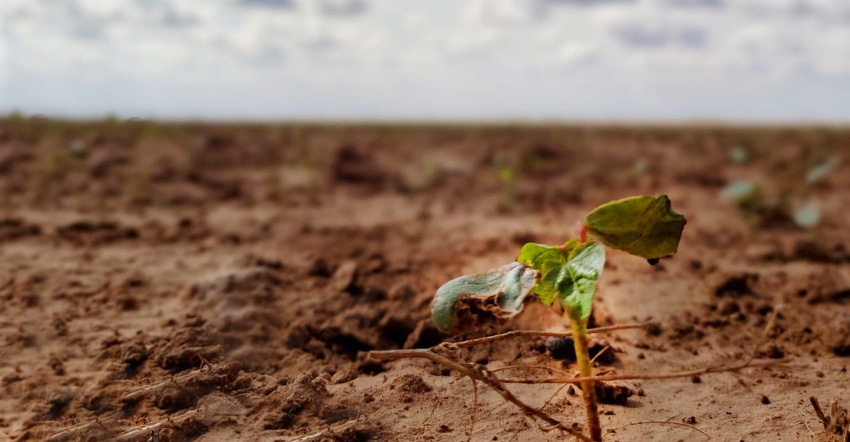
UPDATE: The 2019 "Alternative Crop Options after Failed Cotton and Late-Season Crop Planting for the Texas South Plains," is now available on the Texas A&M AgriLife Research and Extension Center website.
Continuous rainfall, high winds and hail have left many Texas High Plains growers behind on planting goals for cotton or other crops or with damaged crops and looking for shorter season replant alternatives, according to an Extension agronomist.
"Some farmers began indicating by June 3, after yet another rain, they would no longer try to plant cotton," says Dr. Calvin Trostle, Texas AgriLife Extension agronomist, in the June issue of Texas Row Crop newsletter. "So, this places our High Plains farmers in a possible replant decision on a failed crop, usually cotton, or pushes planting back so much that cotton or other full-season crops are no longer viable."
See, Cotton replant provisions dictate producer options
Growers left wondering what to do and what are available options can refer to the 2019 edition of the "Alternative Crop Options after Failed Cotton and Late-Season Crop Planting for the Texas South Plains," scheduled to be published June 11th on the main website of the Texas A&M AgriLife Research & Extension Center, Lubbock. Trostle says growers needing information sooner can refer to the 2018 edition.
"The guide is oriented to the Texas South Plains, but producers in the Concho Valley (south), the Rolling Plains (east), and north into the Panhandle may find this information useful in understanding options, especially on crops with which growers are less familiar."
This is the 17th edition of the publication. "This document reflects what I've learned over the last 18 years on the Texas Plains," says Trostle. "This year will be my 21st crop."
The guide features:
Links for assessing current crop damage (leaf area, growing point, etc.) and viable plant populations for cotton, corn, grain sorghum, and sunflower. "Remember that even thin stands, if healthy, for any of these crops may be a keeper," says Trostle.
Things to consider when replanting after cotton and late-plant considerations for subsequent alternative crops. "Prior to crop termination, consider what herbicides have already been applied. They may limit replant options," he says.
Management guidelines for replant and late-planted crops are provided for over a dozen possible crops. This will include agronomic planting dates, suggested seeding rates, and contractor information for applicable crops, including:
* Grain Sorghum * Soybeans
* Sunflower * Proso Millet
* Guar *Higher input catch crops could be Spanish/Valencia peanuts and corn for grain or silage
* Sesame
* Black-eyed peas and other peas, beans, etc.
* Forages: summer annual sorghum/sudan, hybrid pearl millet, forage sorghum
See, Spring rains increase need for early season weed control in peanuts
For more information, contact:
Dr. Calvin Trostle, Extension Agronomy, TAMU Dept. of Soil & Crop Sciences, Lubbock, (806) 746-6101, [email protected];
Dr. Murilo Maeda, Extension Cotton Specialist, TAMU Dept. of Soil & Crop Sciences, Lubbock, (806) 746-6101, [email protected];
About the Author(s)
You May Also Like






